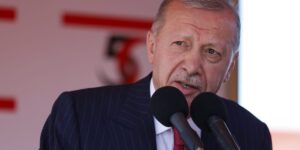Bank of Japan to consider rate hike, outline bond taper plan

By Leika Kihara
TOKYO (Reuters) -The Bank of Japan is expected to detail plans to taper its huge bond buying on Wednesday and debate whether to raise interest rates, signalling its resolve to steadily unwind a decade of massive monetary stimulus.
The decision comes as the U.S. Federal Reserve looks to cut interest rates, possibly as early as September, reversing an aggressive rate-hike cycle that drove up the dollar and caused a painful yen sell-off for Japan.
At the two-day meeting ending on Wednesday, the BOJ will decide on a quantitative tightening (QT) plan that will likely halve monthly bond buying in 1-1/2 to two years’ time – a pace roughly in line with broad market forecasts.
The board will also debate whether to raise the BOJ’s overnight call rate target to 0.25% from 0-0.1%, which would bring short-term interest rates to levels unseen since 2008.
Several domestic media, including public broadcaster NHK and the newspaper, reported earlier on Wednesday that the BOJ would consider raising rates, citing unidentified sources.
Government representatives would not request a delay in the board’s vote for a rate hike at the meeting, the Nikkei said.
The media reports pushed up the yen, which stood at 152.65 to the dollar on Wednesday. The dollar has fallen against the Japanese currency since hitting a 38-year high of 161.96 on July 3.
Japan’s 2-year government bond yield jumped in early Tokyo trade on Wednesday.
“A rate hike today would put an increase to 1% in sight by the end of fiscal 2025,” Naoya Hasegawa, chief bond strategist at Okasan Securities, said on the outlook for short-term rates.
“It would heighten the chance of Japan making a full-fledged shift to a positive-interest rate environment.”
A rate hike on Wednesday would defy dominant market expectations for the BOJ to stand pat until later this year. More than three-quarters of economists polled by Reuters on July 10-18 had expected the BOJ to keep rates steady this month.
Japan’s economy is at an inflection point with inflation holding above the BOJ’s 2% target for well over two years and workers getting their biggest base pay hikes in three decades.
But rising living costs have hurt consumption, pushing the economy into contraction in the first quarter and casting doubt on whether households can swallow further price increases.
Data released on Wednesday showed factory output fell 3.6% in June, though manufacturers surveyed by the government expect production to increase in coming months.
Separate data showed retail sales rose 3.7% in June from a year earlier, beating a median market forecast for a 3.2% gain.
The BOJ ended negative rates and bond yield control in March in a landmark shift away from its radical stimulus programme.
Governor Kazuo Ueda has said the BOJ will hike rates further if it becomes convinced that rising wages will prop up services prices, and keep inflation durably around its 2% target.
He has also said the BOJ would aim to take short-term rates to levels that neither cool nor stimulate growth – seen by analysts as somewhere between 0.5% and 1.5% – in coming years if inflation is seen sustainably hitting 2% as it projects.
With steady inflation keeping real borrowing costs low, the BOJ will likely drop signs that it is on course for a steady rate hike path through 2026.
Such clues, or guidance on the future rate hike path, will likely come from Ueda’s post-meeting briefing or a quarterly outlook report due after the meeting.
In the report, the BOJ will likely roughly maintain its projection made in April that inflation will stay around its 2% target in coming years, sources have told Reuters.

The BOJ’s decision will come hours before that of the Fed, which is likely to hold rates steady but signal its readiness to reduce borrowing costs as soon as September.
While the BOJ insists it does not use monetary policy to affect currency moves, rising concerns over a weak yen have prompted some calls from government and business leaders for the central bank to speed up its shift away from near-zero rates.







